Stone, minerals and semiprecious of the world stone
Native elements: Silver -->rus

 Diagnostic cart.
Diagnostic cart.
On a photo. The typiforms of native silver are visible as ambages.
Ag
Crystal structure cube
Hardness on the Mohs scale 2,5-3
Specific unit weight mass 9,6-12
Cleavage non-existent
Fracture, break wrong
Colors white-grey
Colors in powder triturate grey metallic
Glance (glitter, glare) metallic

To the noble metals take silver, gold, platinum. Silver in a native kind be found in ores of gold, and also in multimetallic complex ore (leaden-zinc), nickel-cobalt and some tin ores. It is got mainly as a passing component at processing of ores of other metals. Along with native silver it is served as ore minerals of this metal vitreous silver, freibergite (silver faded ore) and Prustite-Pyrargerite, aerosite. Silver widely used in electro- and radio engineering and electronics. Jeweller wares and flatwares make mainly out of alloys of silver with a copper.
Glance (glitter, glare) metallic, opaquely. Colors silvery-white, grey or with a black raid. A line silvery-white. Fracture, break hooked, well stretches in a wire, malleable. Cleavage non-existent. Be found as nests or dispersion, dissemination. Crystals of cube Crystal structure, usually wrong, often in form wire or thin hairsprings, dendrites is not uncommon. Places of display: Freyberg ( Saxony, Germany, EU), Kongsberg (Novergiya), Cobalt (Canada), Nevada (USA), Mexico, CIS.
Rarely forms the crystalline forms of cube and octahedral form (as on a picture on the left). Usually they are deformed very little size; sometimes form accretions of dendrites type. Usually there are plates, ribbons and ambages, the masses of various sizes can be also present. Glance (glitter, glare), as a rule, usually metallic; on air mineral darkles in presence even a few of ozone and sulphuretted hydrogen.
Form of crystalline excretions. Mainly dense accumulations, wire, hair-like, piliform, capillaceous forms, shallow scales, leaves, flat featherlike dendrites, grains of wrong form, are characteristic also. Crystalline structure. Cube face-centered lattice. Class of symmetry. Hexaoctahedral - mЗm. A very ductile malleable brilliant greyish-white element having the highest electrical and thermal conductivity of any metal. It occurs free and in argentite and other ores: used in jewellery, tableware, coinage, electrical contacts, and in electroplating. Its compounds are used in photography. Symbol: Ag; atomic no.: 47; atomic wt.: 107.8682; valency: 1 or 2; relative density: 10.50; melting pt.: 961.93oC; boiling pt.: 2163oC.
Due to the unique natural qualities silver is occupied by the special place in the cultural legacy of different people. History of the use of silver counts millenniums, although it was known considerably later than gold. For this time the great number of silverwares accumulated in the world. In two-bits silver was found in an area by cementations or sometimes - in the area of oxidization of hydrothermal silver vein, lode, mines.
Diagnostic indication.
Except for a color and form, native silver is recognized by solution of aquafortis and on blackening in the pair of sulphuric acid. It well installs electrical an equipment and warmly.
Origin provenance genesis.
Can have both a primary origin (directly from a magma during its thermosetting) and to be the result of decomposition of other minerals (vitreous silver, different sulfosalts, galena, galenite, argentic).
Deposit minefield mine field occurrence subsoil.
Native silver has an economic value only in Kopyapo (Chile), and also in Batopilas and Guanakhuato (Mexico). In a few observed to Byutt (the state is Montana), Silver-City (state of Idaho), Silver-King-Mayn (the state is Arizona). In nine metric centners was found out a block in Kobalt- City (province of Ontario, Canada).
Use, practical application, deployment.
Mostly used for the production of chinks, tableware, works of art etc. The bulk of silver is obtained as a by-product at smelting of lead and zinc. Making of the articles of art is very ancient tradition. The largest museums take silverwares the special departments. On territory of Ukraine making of decorations was very popular from a silver wire - most ancient jewellery art tula and filigree.
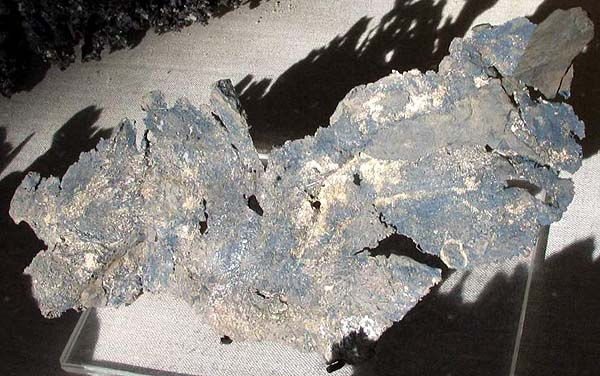
Amalgam of silver. Dendrite plate in to 2 mm thick from a crack in a mudstone. Size of standard of 21 sm
Khachakchanskoe ore-mines, Tomponskiy district. A photo: © A.A. Evseev.
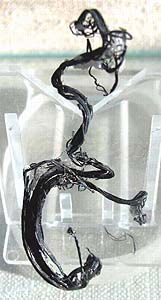
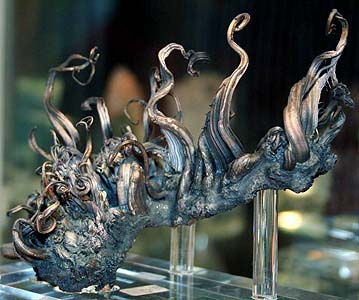
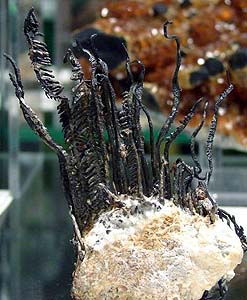
Silver. Sarbayskiy, Kazakhstan. Height ~6 sm of Silver. Germany. Munich-show-2007. Dendrity of native silver from Mexico.
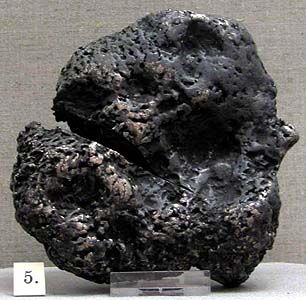
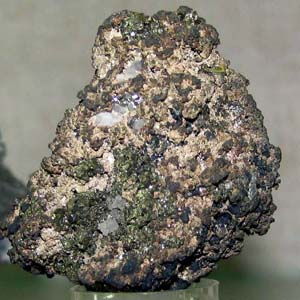
Silver. Bear isle, White sea, Russia. Silver. Skeletal crystals. Bostanitos, Mexico. A photo: © A.A. Evseev.
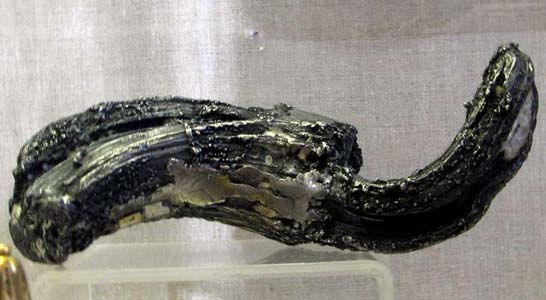

Silver. Kongsberg, Norway. Length 16 sm, mass 2770 A nugget is got Peter I in a gift at seeing a museum
in Copenhagen. Silver. Kongsberg, Norway. A photo: © A.A. Evseev.
Silver in an organism possesses a bactericidal, antiseptic, anti-inflammatory, astringent action effects. However much tuj attribute to the vitally important for an organism ultramicroelement. Poisonous. Biotcomprehensibility (assimilability) of silver, which is determined on a size by suctions from a gastroenteric highway, is equal 5%. In an organism silver forms complexes with the squirrel of plasma of blood (by globulins, albumen, Fibrinogenum, haemoglobin and other), blocks the sulfhydryl groups (HS-) of enzymes, braking their activity, represses the tissue breathing (oxygen - silver actively oxidizes and biologically "burns", effect of phosphorus in an organism). Under influence of silver a miosin is an albumen of muscular tissue of people - loses ability to slit ATP. Tissues is "in silver" - "burns" (necrosis).
Displays of surplus of silver: defeat of cns; paropsiss as a result of deposit silver in the retina of eye, decline of arteriotony, brown or greyish tint of skin and mucous membranes (argyrosis, argyria, argyriasis, argyrism), pains are in right subcostal area, area below the ribs, hypochondrium, increase of hepar; gastritises, nausea, vomiting, diarrhea; argyrosis, argyria, argyriasis, argyrism is formation of deposits of silver in a skin. Drinking water with the ions of silver or gold is not needed. Silver, as well as gold - cellular toxin, xenobiotic (matter, alien an organism or natural environment). At a contact with silver accumulates in a hepar, buds, skin and mucous membranes.
The ions of microelements substitute for the ions of silver in enzymes, for example ion of cobalt, accountable for metabolism and reproduction. It results in a parafunction cage and to its death. The permanent use of silver even in small doses can cause a disease, related to enhanceable maintenance of silver in an organism - argyrosis, argyria, argyriasis, argyrism. Harmless for a people is the total accumulated dose which a people can get for all of life (70 years) - 10 g of silver, a valid for one occasion toxic dose is 60 mgs, lethal (death of brain) - 1,3-6,2 It is related to the accumulation in cerebral and nervous tissues of silver is a "black brain" (electric hasps between cerebral and nervous cages, cages of retina, receptors and their destruction biological and by other electric current, strokes).
Signs of insufficiency of silver. At the decline of concentration of silver in an organism there is worsening of feel, head pains, rapid fatigueability, decline of immunity, work of the cardiovascular system is violated, veins and arteries ("illness of body-builder and COMPUTER operator", valves suffer) broaden, the concentration of cholesterol rises in blood. Silver plays an important role in providing of processes, related to higher nervous activity (calculable 32-bit brain of people) and functions of the peripheral nervous system (contact of central cerebral "processor" and nervous conducting cages, look like wires from a brain).
Silver possesses the expressed bactericidal, antiseptic, anti-inflammatory, astringent action effects. Silver is basis of antibiotics. Penicillin fungi master this metal exactly (self-preservation of fungus in the conditions of biological antagonism). Silver is an explorer of electric current. Silver is an antagonist of copper.
Rezorbciya of silver is possible through a skin and mucous membranes. Silver in negligible quantities contained in all of organs and tissues; middle maintenance of element in the body of mammals arrives at 20 mcg on 100 g of dry mass. A brain (basic depot of silver), lights, hepar, red corpuscles, pigmental shell of eye and hypophysis, is most rich in silver. Silver hatches from an organism through an intestine.
Silver is needed: at erosions, ulcers, excessive granulation, cracks, sharp conjunctivitis, trachoma, chronic hyperplastic laryngitis, at inflammations of urethra and urinary bladder (as antiseptic, anti-infective agent), at nervous illnesses (neuralgias and epilepsies, as an explorer of electric current). Food sources of silver: water-melons, cucumbers, dill, nuts cedar, white mushrooms, agaric honey, salmon, pilchards, shrimps.
DOPOG #4.1 
Flammable hard solid substance matters, self-reactive matters and solid desensitized explosives
Risk of fire. Flammable or combustible matters can catch a fire from sparks or flame. Can contain self-reactive matters, apt at exothermic decomposition in the case of heating, contact with other matters (such as: acids, connections of heavy metals or amines), to the friction or blow.
It can result in the selection of harmful or flammable gases or pair or spontaneous combustion. Capacities can burst at heating (dangerous, perilous - does not burn practically).
Risk of explosion of the desensitized explosives after the loss of desensitizer
Seven vertical red striaes on a white background, isometric, number of DOPOG, black flame
DOPOG #5.1 
Matters substances, which oxidize
Risk of stormy reaction, self-ignition or explosion at a contact with combustible or flammable matters
To shut out formation of mixture of load with flammable or combustible matters (for example by sawdusts)
Yellow rhombus, number of DOPOG, black flame above by a circle
DOPOG #6.1 
Toxic non biological matters substances (toxin)
Risk of poisoning at inhalation, contact with a derma or swallowing. Make a danger for a water environment or sewage system
To use a mask for emergency abandonment of transport vehicle
White rhombus, number of DOPOG, black skull and crossed cross-bones
